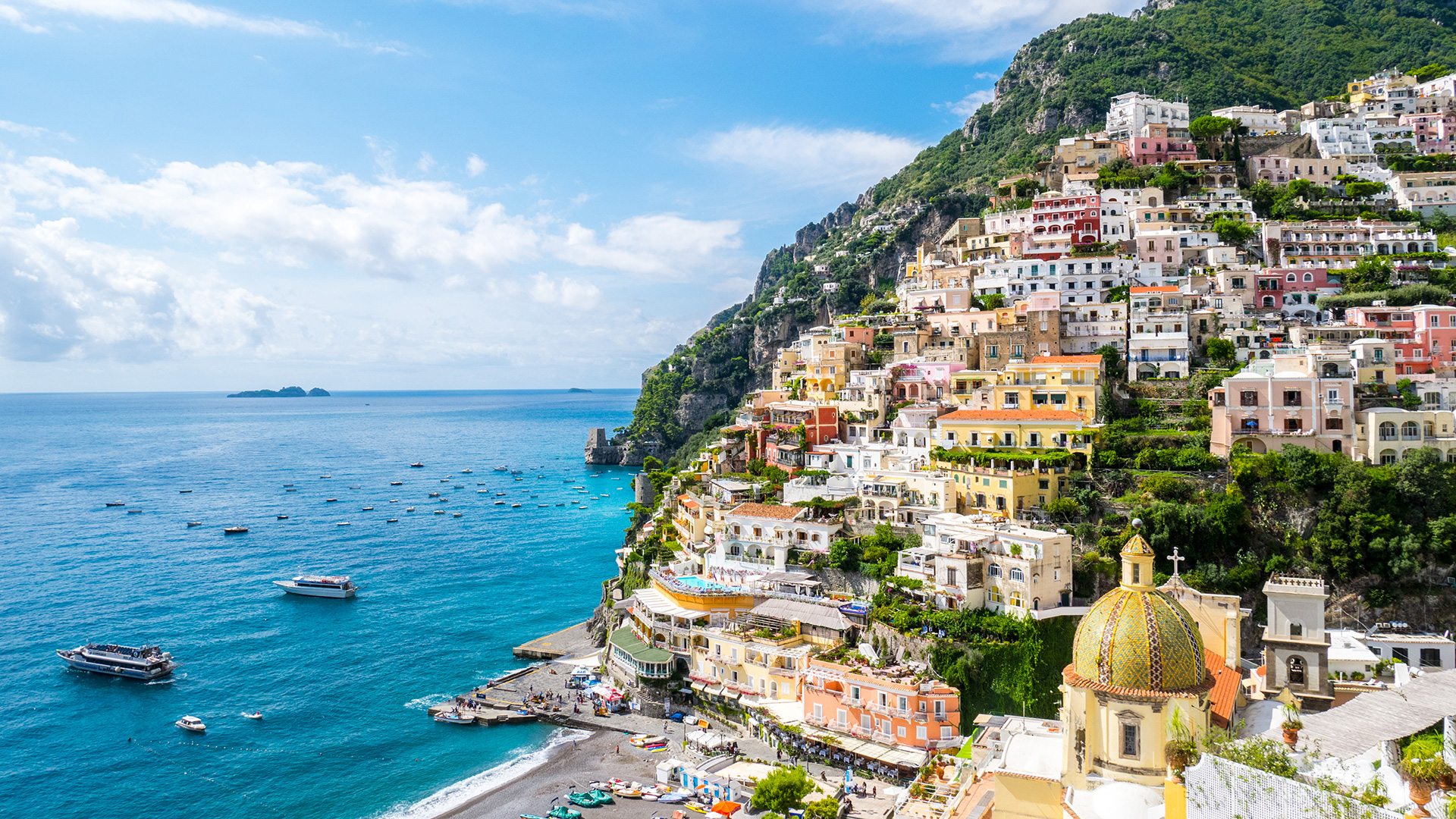POSITANO
A pearl of the Amalfi Coast, Positano presents itself as a cluster of pastel houses clinging to the steep ledges of the Lattari Mountains, which reflect themselves in the clear sea below, surrounded by an intense fragrance of lemon and bright and vivid colors of bougainvillea.
A maze of alleys and steps with small shops displaying the typical products of local crafts, which, together with the undisputed beauty of the landscape, have contributed to make Positano and the Amalfi Coast famous world-wide. We refer to the fresh linen dresses in style “Positano fashion“, the leather sandals, the colorful ceramics and the limoncello.
The panorama stretches between Punta Licosa and Capri, and in the middle, at just three miles from the coast, the three islands of “Li Galli” (Gallo Lungo, Rotonda and Castelluccio) emerge from the sea, once home of the sirens of Homer’s Odysseus , and recently of the choreographer Leonide Massine and of the ballet star Nurejev.
There is no certain information about the first inhabitants of the area: some historians assume Positano was a primitive settlement of Osco or Piceno populations. However, as often happens, when the history is uncertain, the legend takes its place and, in this case, it tells the story of a love affaire between Neptune and the nymph Pasitea.
Later the Roman nobility built here their luxury seaside villas: one on the island of Gallo Lungo (whose remains, however, are no longer visible, being covered by the modern house of Leonide Massine, who in the twenties bought all three Li Galli islands) and another recently rediscovered in town during the restoration of the crypt and the bell tower of the Church of Santa Maria Assunta.
Positano followed the events of the Ancient Maritime Republic of Amalfi and suffered, like other coastal countries, the constant raids of pirates. After the First World War it was chosen by several Russian and German artists and writers as their home, as here they can enjoy an atmosphere of calm and serenity.
Not damaged during the Second World War, Positano became a popular destination for VIPs, writers, artists, actors and film directors from all over the world, with the intent to enjoy the real pleasure of a simple life and genuine.

